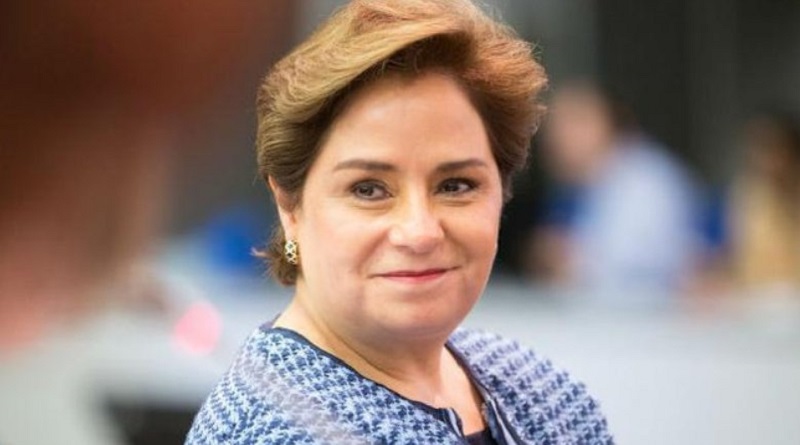Gateway to low-emission, sustainable future must open wider- UNFCCC chief
Executive Secretary, United Nations Framework Convention on Climate Change (UNFCCC) Patricia Espinosa, in this treatise, stressed that full participation, action and common understanding by all – governments, states, cities, business, investors and citizens – will achieve the future we want.
The pathways to a future free from the worst impacts of climate change exist. A future where all can rely on a sustainable life and livelihood and where humanity’s treatment of our planetary home will not bring the roof down on our heads. Yet the gateway to that future must now open wider so that many more architects and builders of this sustainable, low-emissions world – across government, economy and society – can advance together, further and faster, down an open road.
So often, peace and security now seem difficult to reach. Population growth, food and water scarcity and chaotic urbanisation seem insurmountable to the citizen on the street or in the field.
We see growing threats and real impacts from climate change in both the developed and developing worlds.
Yet it is also a point in time when the nations of the world, most clearly through the Paris Agreement and the 2030 Agenda for Sustainable Development, have agreed that a sustainable, resilient and secure way of life is an essential and common goal.
This represents no less than a bold statement of determination by the international community to transform the way we generate power and produce and consume food and goods, and to invest in clean energy, manufacturing and farming which no longer pump out the greenhouse gases that create global warming and the pollution which destroys environments and public well-being.
It is a unique moment of optimism. It is also a moment when only the full participation, action and common understanding by all – governments, states, cities, business, investors and citizens – will achieve the future we want. So it is important to look concretely at why and how the Paris Agreement can work and how it dovetails across the 2030 Agenda.
Global strategy
The Paris Agreement is a global strategy from now into the longer term, defined by three key aims: limiting the average global temperature rise to well below 2ºC above pre-industrial levels and to make efforts to limit it to 1.5ºC; fostering and supporting resilient and sustainable low-emissions development; and ensuring global investment flows support these goals.
These three aims provide a clear, long-term direction of travel to all these state and non-state sectors because they link economic activity, emissions and the impacts of climate change.
The temperature goal reflects a vision of the type of future society we want, precisely because it does compel us to rethink the way we produce, use and consume energy, how we manufacture and build and how we manage our land and ecosystems.
To this end, policies need to be set in place now, technologies need to be developed, matured, commercialised and deployed at scale, and practices and behaviours of economic actors need to move ever faster towards low-emission and sustainable business and investment.
It is most important to underline, therefore, that the Paris Agreement includes an effective engine to raise global climate action over time, and in time to meet the temperature goal.
The Agreement both invites governments to communicate long-term, low-emission development strategies and also asks each country to submit national climate plans (known as NDCs) which they will update every five years, or more often as desired, towards increasingly higher ambition.
These are mutually reinforcing, because the long-term strategy provides a framework and direction to the subsequent national plans and, at the same time, the increasingly ambitious national plans deliver the results to achieve the long-term strategy.
The global response has been stunning. As of late-August, the UN Climate Change secretariat had already received 154 national climate plans from the 197 Parties to the agreement, with more expected all the time.
Meanwhile, action on climate change and action on sustainability also become mutually supporting goals.
Climate change is Goal 13 of the Sustainable Development Goals (SDGs), but as we look across all of the goals, it is quite evident that climate action contributes to the success of all 17 SDGs and vice-versa.
Look at SDG 1 to end poverty, SDG 8 related to decent work and economic opportunity and SDG 3 to improve health and well-being. For example, cheap, clean renewable energy in so many places that had no access or relied on expensive and dirty fossil fuels immediately improves health, provides new jobs and creates more self-sufficient local economies, boosting communities’ economic independence and empowering them to seek further solutions in other forms of climate action.
Renewable energy, meanwhile, is the critical path to affordable and clean energy for all – SDG 7. Newly installed renewable power capacity continues to set new records, most recently rising nine per cent in 2016 over 2015, according to the REN21 Network’s latest report.
In fact, renewables are becoming central to the sustainable development plans of the developing world. China remains the single largest developer, but a solar revolution is taking off in India and 48 developing countries are now committed to futures of 100 per cent renewable energy.
Likewise, without goals such as quality education and gender equality – SDGs 4 and 5 – we would not develop the full capacity of human effort and ingenuity to make Paris and the 2030 Agenda a success.
UN Women has shown that women and children suffer the impacts of climate disasters in poorer countries at a rate four to five times that of men. The International Renewable Energy Agency reports that women account for no more than 25 per cent of the workforce in the modern renewable energy sector.
Yet, for example, in most developing countries, women are primary household energy managers and key actors in the food system and, once fully empowered, are powerful actors in climate action, including the transition to sustainable energy and climate-resilient agriculture.
In addition, it is important to note that the goals on healthy land and water ecosystems are essential to maintain the future balance of emissions.
Working together
With this understanding of the interconnected nature of all the SDGs and the climate change goals laid out in Paris, it becomes clearer not only why but also how all government, civic and business sectors can and must act together. And this is happening.
For example, from Nigeria’s Delta and Ogun states to California, from Gujarat to Shenzhen to São Paulo, governors are building a host of climate-smart policies to cut emissions and protect their economies and societies from climate impacts.
From Chicago to Jakarta, from Durban to Oslo, mayors are leading the way, driven by the knowledge that cities account for over 70 per cent of global CO2 emissions and 90 per cent of the world’s urban areas situated on coastlines are at high risk from increasing storms and sea-level rise.
And from renewables technology to electric vehicles, from innovative insurance for the poorest and most vulnerable, to record green bonds issuance by major companies such as Apple and Goldman Sachs, the private sector is voluntarily following and sometimes even leading the objectives of these multilateral agreements.
We have, therefore, unprecedented agreement to move towards resilient and sustainable development powered by low-emission energy. We have unprecedented consensus on the path forward. And we have unprecedented political will to move forward together.
We have an agreed and robust foundation for action – in the United Nations and multilateral institutions, and in each country’s national contribution to the Paris Agreement. But the gateway must open wider and we who are inspired by this must inspire others to understand and join this journey towards the only realistic future we have.



